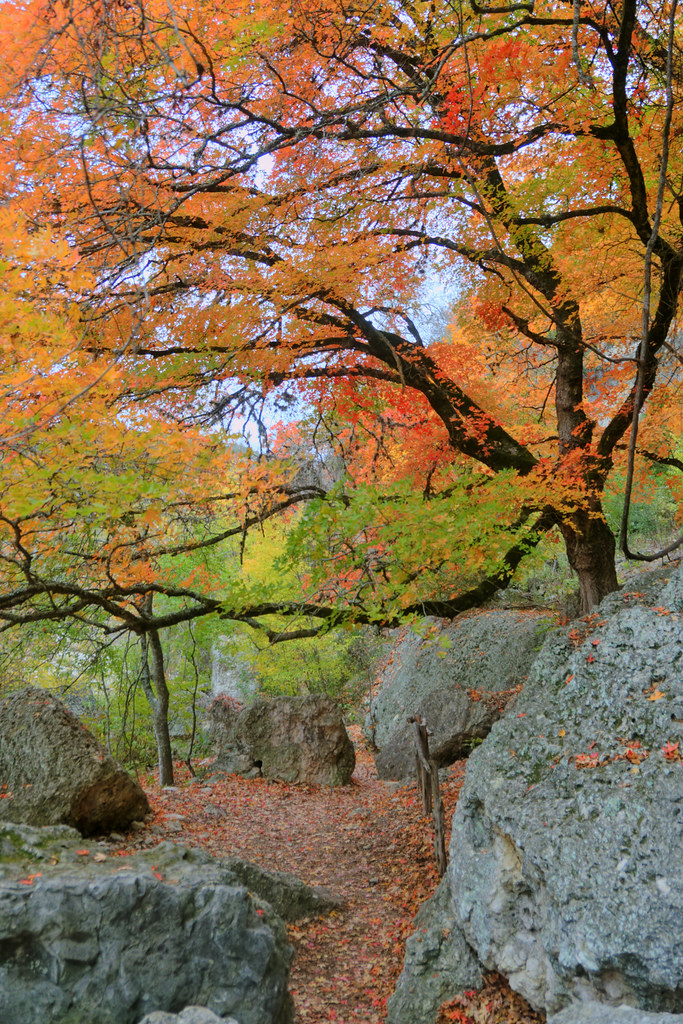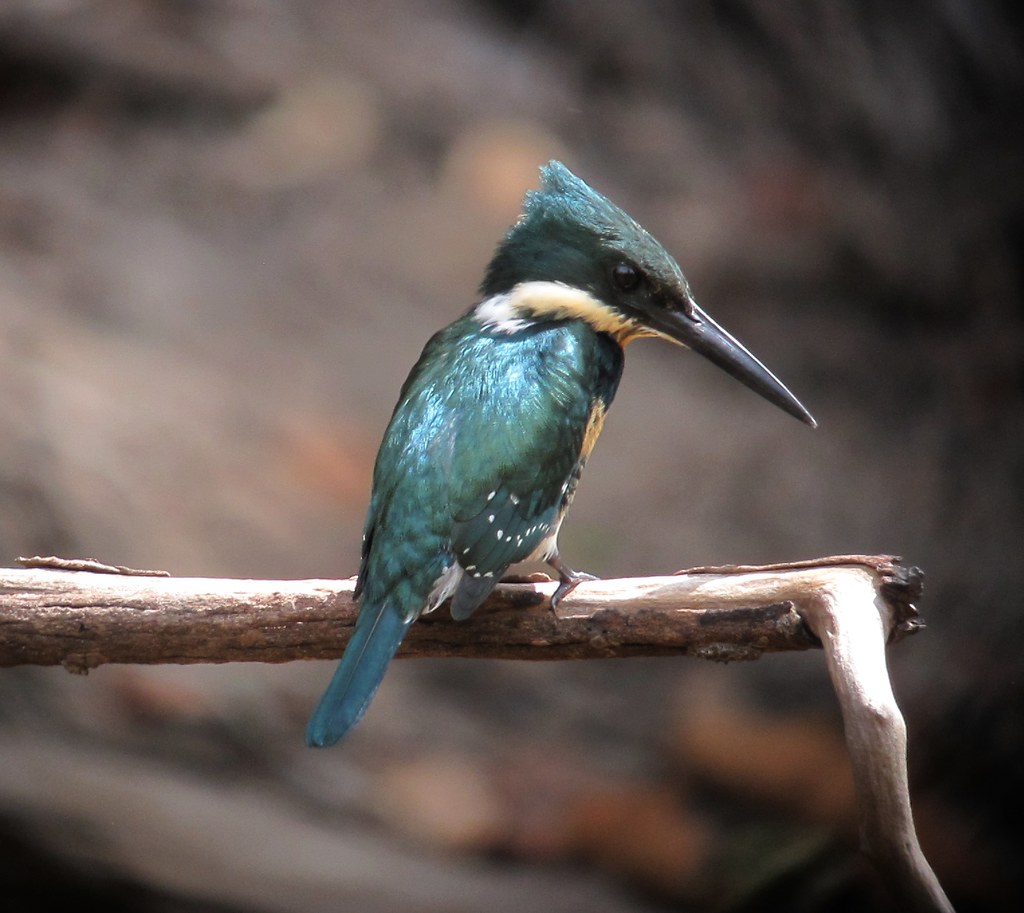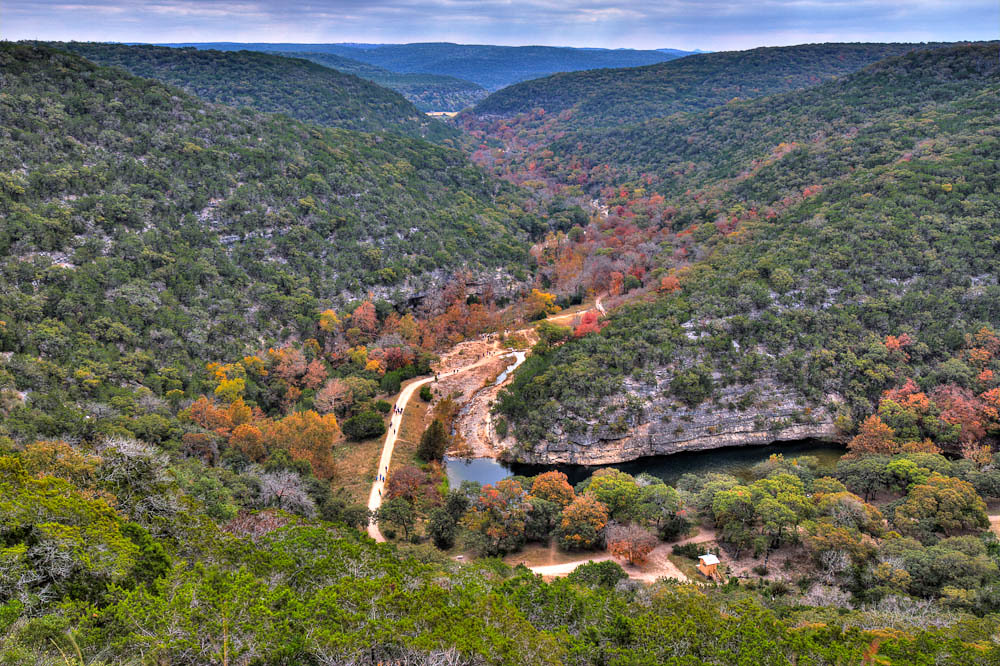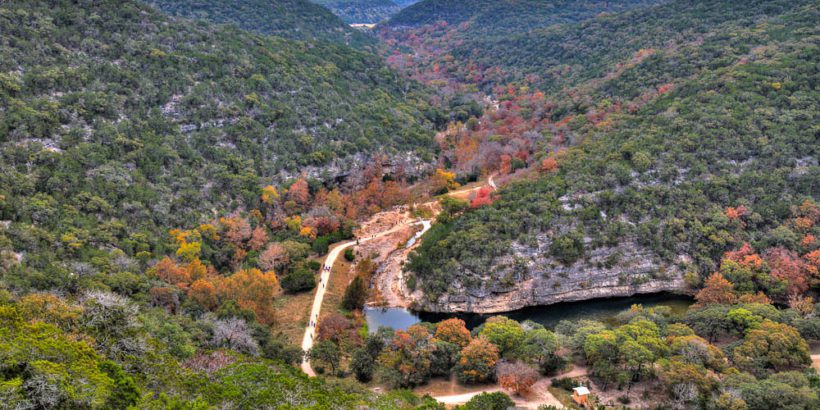Orange and red maple leaves scatter across boulders and blanket the valley floor near the banks of the Sabinal River in Lost Maples State Natural Area in central Texas. It’s November, and that means cool autumn air for visitors who pour in to the park with the goal of witnessing its spectacular fall foliage.
But it’s not just the dramatic color change that’s special about this place—there’s also approximately 2,200 acres of green valley vistas, dripping limestone canyons, and shaded pebbly creeks and springs to explore year-round. In this article, I’ll cover some need to know info for Lost Maples State Natural Area about things like hiking and camping but also get into a little bit of history.
Lost Maples State Natural Area maple trees
Lost Maples State Natural Area is home to a variety of maple trees, with the marquee species known as the uvalde bigtooth maple, an uncommon species whose color change can be among the most spectacular of all trees.
It’s the state’s largest species of bigtooth maple, standing forty feet tall with a crown spanning forty-five feet across.
The maple trees here don’t dominate the hillsides like the fall foliage in some other places in the country, such as New England and the Northeast, yet they tend to cluster on the lower areas of the valleys with intense smaller displays of bright red, yellow, and orange that layer the valley floor as they fall.

What’s pretty fascinating about this species of maple is that experts think these trees are vestiges of a much larger population that dwindled down after the last Ice Age.
About ten thousand years ago, these bigtooth maple trees flourished across Texas and even in Mexico but as glaciers retreated northward and the climate warmed up, these trees all but vanished from the region. For some reason, however, patches of bigtooth maple survived in these canyons where they still flourish today.
These stunning autumnal color changes normally last for only three to four weeks, usually from the last two weeks of October to the first two weeks of November. However, the color change depends heavily on whether there have been cold temperatures and a sufficient amount of rainfall. There is an excellent weekly report issued by the state park that can keep you updated.
Lost Maples State Natural Area flora and fauna
The beautiful fall leaves aren’t the only attraction in the park, however. In addition to the breathtaking maples trees, other flora and fauna are plentiful throughout the park.
Along the Maple Trail, chinquapin, lacey oaks, basswood, pecan, and American sycamore trees sprout among the maples. Plenty of wild animals can often be spotted as well, including some very rare and even endangered species.
A rare species of bird, the green kingfisher—who burrows small tunnels up to a yard or so deep into riverbanks to nest—can be found in the park year-round, and the endangered black-capped vireo and golden-necked warbler can be found during the spring and early summer. Other larger animals in the region include deer, gray fox, armadillo, raccoon, bobcat, and javelina.

In many of the spring-fed creeks and ponds, the Texas state fish, the Guadalupe bass, can usually be found.
The Guadalupe bass is a rare fish, endemic to Texas, and highly adapted to thriving in fast-flowing creeks and rivers. It’s recently been under threat not by fishermen or other predators but rather the unintended result of introducing a nonnative species into this region. In 1974 the Texas Parks and Wildlife Department introduced smallmouth bass into the Edwards Plateau to improve fishing in central Texas.
An unforeseen consequence was that the Guadalupe bass and the smallmouth bass began producing hybrids that have threatened to displace the two native species by greatly reducing their population.
The good news is that increased stocking of Guadalupe bass throughout the region and encouraging catch-and-release practices will likely rectify the problem. Programs already initiated have seen great progress in restoring these fish.

Lost Maples State Natural Area hiking
The hiking attractions at Lost Maples include four different trails that range from approximately one to five miles.
The most vivid displays of colorful fall foliage are likely best appreciated along the East Trail, which includes the best panoramic views of the park. In addition this hike takes you by the Maple Trail and through Hale Hollow Creek, numerous dripping springs, and stunning limestone cliffs.
The 4.4-mile-long East Trail is moderately strenuous, however, and requires navigation over some fairly rocky and at times steep terrain that can prove to be a good workout. So be prepared. Most will spend close to three hours on the hike.
Alternatively, if you’re looking for a more remote experience with slightly less challenging terrain than the East Trail, consider the 4.8-mile West Trail, where you will likely find fewer visitors and more privacy. This well-shaded hike involves multiple crossings over the crystal-clear Can Creek and passes by multiple small swimming holes—perfect for a summer visit. Attempt this hike counterclockwise for the easiest approach.
If you have doubts about your desire to venture off into potentially challenging terrain or are dealing with serious mobility issues, then the shorter Maple Trail (less than one mile) is probably the better option.
It’s the most popular trail in the park, located right next to the day-use parking area. It’s an easy hike that takes you over mostly flat terrain and offers nice, cool shade along the Sabinal River Canyon where you’ll see the famed uvalde bigtooth maples, along with a host of other trees that rise over the boulder-strewn river.
Lost Maples State Natural Area camping
There are 30 campsites with electricity and six primitive campsites. The non-primitive camp sites, which go for $20 per night, include:
- Picnic tables
- Fire ring
- Water hookups
- 30 amp hookups
- Shade shelter over picnic table
- Back-in RV parking
- Restrooms with showers nearby
Primitive campsites go for $10 per night but keep in mind the daily entrance fee is charged in addition to any camping fees. Call the park or park information (1-800-792-1112) for the latest updates.
Lost Maples State Natural Area cabins
You can also go the cabin route. Search for cabins here. There’s also the Lost Maples Winery in the area where you can enjoy wine tasting and also stay in cabins.
Lost Maples State Natural Area Tips
- If you’re visiting in the fall, be sure to arrive as early as possible to beat the crowds, especially on weekends.
- The parking is limited to a maximum of 250 cars and fills up fast. In addition, campgrounds for the fall will fill up in a hurry, so do your best to book as early as eleven months ahead of your visit.
- While the main overlook on the East Trail is a favorite, many visitors are unaware of another great overlook point near the primitive campsite B, which is accessed via an offshoot of the East Trail on the northern end of the park.
- Flashfloods can be hazards near stream areas after heavy rains.
Getting There
Several road and highways lead into the general area surrounding Lost Maples State Park. However, the park is located directly off Ranch Road 187. You can hit Ranch Road 187 from the north via HWY 39 or from the south by taking 337 into Vanderpool and then heading north on Ranch Road 187.
Nearby Destinations:
- Stonehenge II (41 miles; 1 hour)
- Enchanted Rock (93 miles; 1 hour 50 min)
- San Antonio, TX (93 miles; 1 hour 50 min)
- The Narrows (108 miles; 2 hours 20 min)
- Jacob’s Well (113 miles; 2 hours 15 min)
- Austin, TX (157 miles; 2 hours 40 min)
- Houston, TX (284 miles; 4 hours 25 min)
Daniel Gillaspia is the Founder of UponArriving.com and the credit card app, WalletFlo. He is a former attorney turned travel expert covering destinations along with TSA, airline, and hotel policies. Since 2014, his content has been featured in publications such as National Geographic, Smithsonian Magazine, and CNBC. Read my bio.


A great review and much appreciate the insights. Now I can’t wait to go to Lost Maples State Park!
Thanks — really appreciate it!